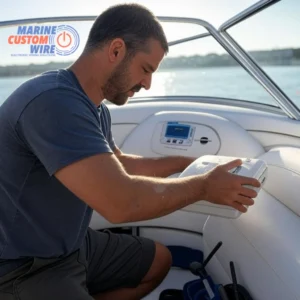
Carbon Monoxide Detectors for Enhanced Safety Monitoring
In marine environments, safety is a vital concern. Carbon monoxide (CO) poses a serious risk to boaters, making the integration of carbon monoxide detectors into marine electronic systems an essential upgrade. This article explores how integrating carbon monoxide detectors with marine electronics can provide advanced safety monitoring and peace of mind for every boating enthusiast.
Why Carbon Monoxide Detection Matters on Boats
Carbon monoxide is a colorless, odorless gas that can accumulate in confined spaces such as cabins and engine rooms. Common sources of CO on boats include:
- Exhaust fumes from engines and generators.
- Fuel-burning appliances.
- Poor ventilation systems.
Undetected CO exposure can lead to symptoms such as headaches, dizziness, and in severe cases, fatal poisoning. Integrating carbon monoxide detectors into your boat’s electronic systems ensures real-time monitoring and immediate alerts, reducing the risk of dangerous exposure.

Understanding CO Detectors
Before diving into integration, it’s important to understand how carbon monoxide detectors function. These devices are equipped with sensors that measure CO levels in parts per million (ppm). When levels reach a dangerous threshold, the detector triggers an alarm to alert occupants. Modern detectors come with various features such as:
- Electrochemical Sensors: These provide precise and reliable readings.
- Digital Displays: Show current CO levels for easy monitoring.
- Self-Diagnostic Features: Ensure the device is functioning correctly at all times.
Benefits of Integrating CO Detectors with Marine Electronics
Modern marine electronics are equipped with sophisticated features that make integration seamless and beneficial. Here are some key advantages:
Centralized Monitoring
By connecting CO detectors to your boat’s central electronic system, you can monitor CO levels across multiple areas from a single interface. This is particularly useful for larger vessels with multiple compartments.
Automated Alerts
Integration allows carbon monoxide detectors to trigger alarms, send notifications to connected devices, and even activate ventilation systems automatically when dangerous levels are detected. Notifications can also be sent to smartphones, ensuring you’re informed even when not on board.
Enhanced Data Logging
Integrated systems can log CO levels over time, providing valuable data for identifying patterns or troubleshooting recurring issues. This data can also be useful for maintenance and safety audits.
Compatibility with Navigation Systems
Some advanced setups can integrate COdetectors with GPS and navigation systems to pinpoint locations where CO levels are highest, offering insights for improving safety. For example, areas near engine exhausts might consistently show higher CO levels, signaling the need for design adjustments.
How to Integrate Carbon Monoxide Detectors with Marine Electronics
Step 1: Choose Compatible Equipment
- Select carbon monoxide detectors designed for marine use and compatible with your existing electronic system.
- Look for devices with wireless connectivity or NMEA 2000 compatibility for seamless integration.
Step 2: Professional Installation Tips
- Plan Detector Placement: Position detectors in enclosed compartments and sleeping areas for maximum coverage.
- Avoid Problematic Areas: Install away from direct sunlight, ventilation outlets, and areas with poor air circulation.
- Secure Power Connections: Ensure detectors are powered by reliable sources, such as the energized side of the battery switch.
- Follow Manufacturer’s Guidelines: Adhere to installation instructions specific to your carbon monoxide detector model.
Step 3: System Testing
- Test detectors after installation by simulating high CO levels to verify functionality.
- Check automated features, such as alarms and ventilation activation, for proper response.
- Conduct periodic maintenance checks to ensure long-term reliability.
Step 4: Integrate with Smart Systems
- Many modern marine systems allow you to connect CO detectors to smart hubs, enabling remote monitoring and control.
- Set up automated responses such as activating fans or sending alerts to your phone when CO levels spike.

Additional Safety Tips for CO Prevention
- Regular Maintenance: Ensure engines and fuel-burning appliances are regularly serviced to minimize CO emissions.
- Ventilation: Keep cabins well-ventilated, especially when appliances are in use.
- Educate Passengers: Inform everyone on board about the risks of CO and the importance of responding to alarms promptly.
Recommended Carbon Monoxide Detectors for Marine Integration
Some of the best options for these detectors include:
- Fireboy-Xintex CMD6-M: Designed specifically for marine use, with NMEA 2000 compatibility.
- MTI Industries 62-542-MARINE-WH: A reliable option with easy integration capabilities.
- Safe-T-Alert 35-742-BL: A dual detector for propane and CO, ideal for versatile safety monitoring.
Real-Life Scenarios: The Importance of Integration
Imagine being on a multi-day boating trip with family or friends. A silent buildup of carbon monoxide in the sleeping quarters could turn a joyful journey into a tragedy. An integrated system would:
- Detect the rise in CO levels immediately.
- Trigger alarms and notify the captain’s console.
- Automatically activate ventilation systems to disperse the gas.
These real-life applications highlight how critical integrated carbon monoxide detectors are for modern marine safety.
Final Thoughts
Integrating carbon monoxide detectors with marine electronics elevates your boat’s safety to new levels. By providing real-time monitoring, automated alerts, and data-driven insights, this setup ensures a safer and more enjoyable experience on the water. Furthermore, the seamless integration with smart systems makes monitoring and managing safety simpler and more effective.
At Marine Custom Wire, we specialize in creating custom wiring harnesses that support advanced marine electronics. Whether you’re upgrading your boat’s safety systems or installing new navigation equipment, our tailored solutions are built to meet your unique needs. Contact us today to explore how we can enhance your marine electronics setup!
